
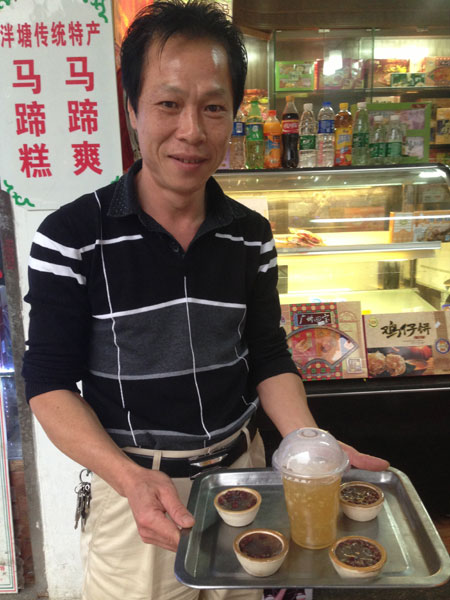 |
| Feng Zhimin now does a roaring business at Lychee Bay, selling old-time delight such as water-chestnut drinks and "little chicken" biscuits. (China Daily/Pauline D. Loh) |
These sweet shops also sold "little chicken biscuits" made with lard and flavored with fermented red beancurd - savory, crisp and very addictive, good for whiling away stray hours and waiting for the next customer.
These stories I heard when I was just knee-high, had made me imagine Lychee Bay as the Chinese child's version of Willy Wonka's Chocolate Factory, full of delicious treats. I was not yet old enough to fantasize about other pleasures.
It was all oddly familiar when we finally saw Lychee Bay recently.
It is indeed full of red and green, but the colors come from neon lights lining the river and twinkling fairy lights decorating the roadside trees. If the ghosts of those rich young men and pretty ladies of the street still lingered, we did not see them.
It had been a rainy day and Lychee Bay was bathed in a twilight glow that did give it an otherworldly charm, but the people walking the streets were the odd tourist or three, Guangzhou locals and migrant workers having an early dinner.
The river is all cleaned up and the nearby swamps drained. But the little sampans that used to sell the delicious porridge of my granddaddy's days are also long gone.
In their place, neat rows of shop houses line the banks and the streets, and although the old architectural style of five-foot ways and bar-gates can still be seen, the rusting balustrades are now deserted, minus the svelte young ladies.
A stroll through Lychee Bay now is like taking a step back into Guangzhou's culinary history.
In the dimming light of day, we are attracted by the red spotlights shining on the green signboard of Wang Laoji, that famous cooling herbal drink now at the center of a messy branding battle.







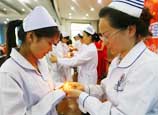
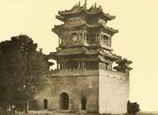
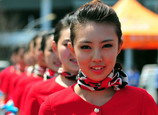

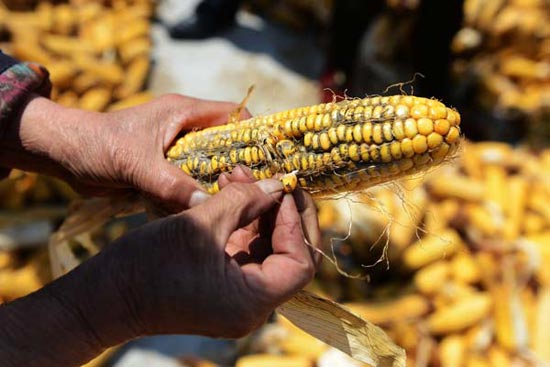








![]()
